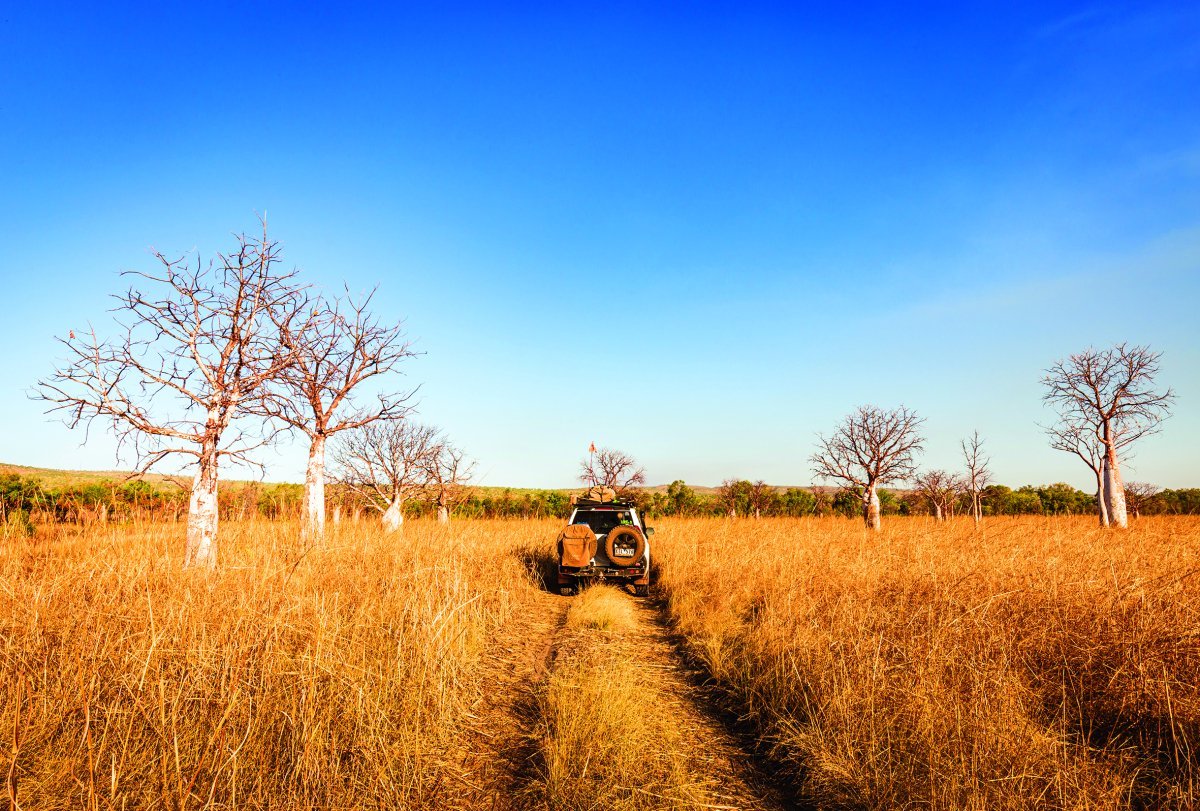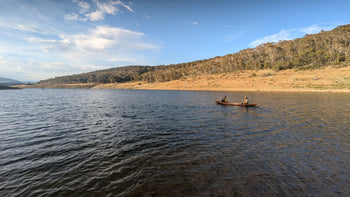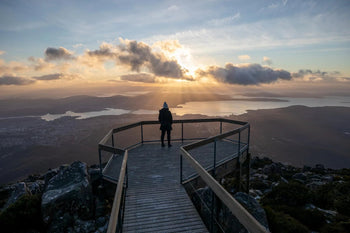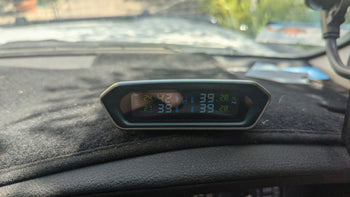

Winter rolling in doesn’t mean your touring has to stop. In fact, in the northern regions of Australia winter signifies the beginning of the dry season, which is the perfect time to visit some spectacular destinations.
Australia is not known for its winters. In fact, our country is synonymous with the summertime, sunshine and beaches. But if you look to Australia’s northern regions, you’ll notice that winter doesn’t really have an effect up there — it’s actually the beginning of their dry season, also known as the ‘Dry.’ And it’s here that Aussies from southern states flock to in search of warm weather. The Dry is the ideal time to enjoy the famous areas of northern Australia.
Whether you’re taking on the dry season in a 4WD, caravan or motorhome, there is a lot of information of which to be aware that can make or break your trip. Different seasons and regions demand different expectations and preparations, and we want to help you figure it all out.
Here at A247 Gear, we like to be prepared for every situation, especially when it comes to braving the Aussie outdoors. And dry season touring presents its own unique challenges. Read on to find out what to expect during dry season touring, how to prepare and a few indispensable items we recommend for a comfortable road trip.

What to expect
The northern region of Australia does not adhere to the usual summer and winter seasons that the rest of the country follows. Due to its unique geographical location in regard to the equator, it has a distinct dry and wet season. The wet season, also known as the ‘Wet,’ occurs from around mid-November to mid-April and the dry season occurs from mid-April to mid-November.
For the purposes of this article, we will focus on the Dry. The dry season is essentially six months of drought, while the rest of the country experiences typical Australian winter weather. During the dry season, the vast savannah landscapes change from green to brown and finally to black as fires scorch the grassy understorey.
The winter months (dry season) in the north, while cooler than the summer months, are still quite balmy, especially when compared with the chilling temperatures reached in places such as Victoria and Tasmania. If you’re heading to the famed regions of the Top End, Kimberley, Kakadu, Cape York and the Gulf, you can expect daily average temperatures of around 28–30°C.
If you’re planning on hitting the northern regions during the southern winter/dry season, you should be prepared for warm, sunny days and cool nights. We also recommend avoiding the busy month of July as it coincides with school holidays and the coldest part of the southern winter when everyone wants to escape to the north. To avoid crowds and long lines, we recommend going in May or September — the so-called shoulder months — where the weather is still gorgeous, but you don’t have to contend with school holiday crowds.
Some unforgettable dry season activities you can expect to enjoy include whale watching off the coast of WA, exploring the Ningaloo Reef, boating and snorkelling at the world-famous Great Barrier Reef, bathing in the breathtaking Jim Jim Falls in Kakadu National Park, or even visiting the most northern tip of Australia in Cape York.

How to prepare: vehicles, permits, road closures and accommodation
Dry season touring is not without its challenges. Here at A247 Gear we are big fans of being prepared for any situation … and when it comes to preparing for a long journey far away from home, being educated on what to expect and the items necessary for survival are of utmost importance.
We like to break up our preparation into four categories: vehicle preparation (having the right gear on board, ensuring your vehicle is suited and sound for the trip ahead), permit preparation (ensuring you have the necessary permits to enter the areas you wish to tour), road closures preparation (studying the route ahead to determine which roads are closed and when a detour might be necessary), and of course, accommodation preparation (ensuring you have somewhere booked in to stay ahead of time).
Here are some useful gems of advice pertaining to each pillar of preparation:
Vehicles
You must ensure your touring vehicle (and accompanying caravan, camper trailer, etc.) is suited to the environment and roads you will be traversing. For example, if a particular track/road requires you to have a low range, high clearance four-wheel drive vehicle, then you can’t tackle it in a Toyota Corolla. You also must be aware of your caravan’s capabilities. For example, you can’t take an on-road caravan only designed for the bitumen into the outback where it is likely to fall apart on unsealed roads. You also must ensure you have the appropriate recovery gear and a general toolkit to fix unexpected mechanical problems on board at all times.
Permits
A number of regions and national parks across the north of Australia require permits to enter them. This is usually due to the unique protected environment you are entering and/or the Aboriginal ownership of particular areas. Some areas are extremely culturally sensitive to their Traditional Owners, and these are usually off limits to all tourists unless you have special permission, which is often unattainable for touring applications. Some national parks require permits to control the amount of people coming in to ensure the land is not overused and abused, and so the necessary people can be employed to take proper care of these protected areas.
Road Closures
Due to a variety of reasons, including bad weather, private property changing hands and seasonal events, roads may be closed for a limited time or indefinitely. It is therefore paramount to check your intended route before you leave home, so you can determine if you need to take alternative roads throughout your journey. There are useful websites for each state where you can find this information, or lines to call if you prefer.
Accommodation
Depending on where you are headed and when, having accommodation prebooked is generally a necessity. Some regions in our north are extremely remote, and accommodation isn’t always just available on a whim. You must book your stays in advance and it’s a good idea to do so before you leave home. And you can’t always assume free campgrounds won’t incur additional hidden fees, so always have a surplus amount of money on you just in case you get hit with some of these unexpected fees. Fees and rules vary depending on the accommodation provider, so you must do your research before setting off.

What to take
While there are many different products that exist to make touring easier no matter what time of year you go, there are some dry season necessities we must mention. If you’re heading to sandy regions (of which there are many in the north), then you must be prepared to become bogged at least once or twice. When it comes to being bogged in soft sand, there is one product you can’t go without: recovery boards. They are a simple yet effective way to recover your vehicle without the help of a strong structure like a tree or having to wait for another vehicle.
The second item we must recommend for dry season touring is any form of insect repellent. When it’s hot and dry, insects are fanging for a ‘drink’ of human blood. And as many of us know from experience, there is nothing worse than being kept awake all night due to scratching dozens of mosquito bites. Now, if you’re not interested in the ongoing task of applying insect repellent directly to your skin in the form of lotion or spray all night long, then we recommend a rechargeable mosquito repellent that uses heat energy to activate the repellent.
The third item we must recommend for dry season touring is a firepit for beach locations. While the days can get quite hot in the north during the Aussie ‘winter,’ conversely the nights can get surprisingly chilly. And what better way to warm up than in front of a toasty fire?
Top dry season destinations
We’ve done a bit of research on our end to find the most popular dry season destinations for Aussies. Luckily, due to the varying climatic regions of Australia, we’re lucky enough to find warm temperatures no matter what time of year it is — even in winter.
The most popular regions for dry season touring should come as no surprise, with the northern regions of Western Australia, Northern Territory and Queensland coming in as the favourites. Close behind is the outback/desert in general, where many nomads flock to, to escape the winter chills.
Stay tuned for upcoming deep dives on these mentioned areas, as we aim to help you tackle our country’s most famed dry season destinations. We’ll include tips on what to expect, how to prepare and our favourite, what you need to bring. Let us take some of the burden of researching for your next Aussie dry season adventure.



